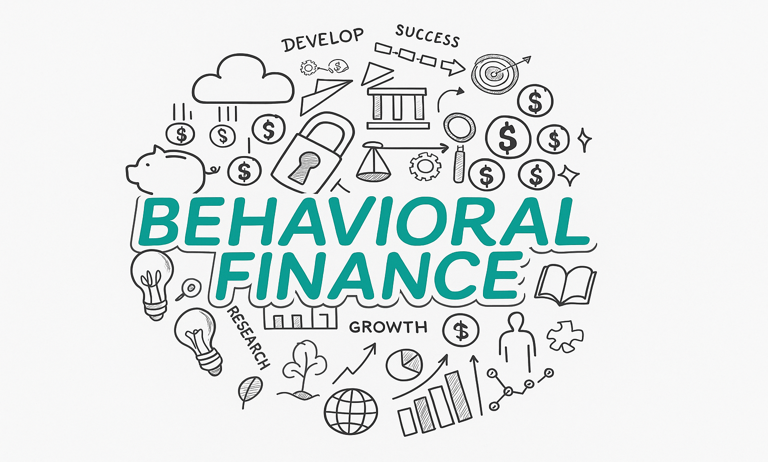PRIVATE
CREDIT MARKET
Imagine a
world where businesses don't rely solely on banks or public markets to secure
funding. That’s the essence of the private credit market, where companies turn
to alternative lenders, such as private equity firms, hedge funds, direct
lenders, and private debt funds, for flexible, tailored financial solutions.
This fast-growing sector operates behind the scenes, fueling corporate
expansions, acquisitions, and restructuring efforts through private debt deals.
Unlike traditional bank loans, private credit offers investors a chance to tap
into higher yields, while businesses benefit from customized financing without
the complexities of public offerings. As economic landscapes shift, private
credit becomes an indispensable tool for companies seeking growth beyond
conventional funding sources.
It has
emerged as a dynamic force in the financial landscape, filling the void left by
traditional banks and public markets. Its roots trace back to informal lending
practices, evolving over centuries to address the ever-changing needs of
businesses and individuals. In response to the 2008 financial crisis, tighter
bank regulations left a void that private credit providers swiftly filled,
delivering customized and adaptable financing solutions.
The
Rise and Momentum of Global Private Credit
As per the
recent Fitch Ratings article “Private Credit Risk Not Yet Systemic;
Structures, Asset Classes Evolving” dated February 10, 2025(1),
“Global private credit has grown rapidly in recent years to $1.6 trillion in
assets under management (AUM), according to Preqin. Direct lending accounts for
half of AUM, but asset-based finance will drive growth over the next several
years. Some alternative investment managers (IMs) are expanding this asset
class via bank portfolio purchases and/or flow agreements, as banks focus on
capital efficiency.” The private credit AUM has witnessed significant expansion
in recent years, driven by evolving financial structures and increasing
investor interest.
This trend
is further supported by increased borrowing across sectors, evolving regulatory
frameworks, and rising institutional investment in private credit assets, highlighting
the growing role of non-bank lending and the U.S. economy’s increasing
preference for alternative financing solutions. While the market’s trajectory
reflects a deepening reliance on private credit amid tighter bank lending
conditions, it also raises concerns around liquidity risks and heightened
regulatory scrutiny, underscoring the need for careful monitoring of emerging
asset classes and complex financial structures.
Advantages of the Private Credit Market
The rise of private credit brings several advantages, shaping a more
flexible and diverse financing landscape-
1. Tailored
Financing for Underserved Segments
The private credit market offers flexible, customized financing solutions, such
as direct lending, mezzanine, and distressed debt, that are particularly
valuable for mid-sized companies, startups, and niche sectors often overlooked
by traditional banks.
2. Fills
the Lending Gap and Ensures Capital Flow
Especially since the 2008 financial crisis, private credit has played a crucial
role in maintaining the flow of capital during times when banks pull back,
supporting business continuity and economic resilience.
3. Attractive
Returns and Diversification for Investors
For institutional and retail investors, private credit provides access to
higher yields and portfolio diversification, with lower correlation to
traditional assets like stocks and bonds, making it a strategic tool for
balancing risk and return.
4. Supports
Economic Growth and Innovation
By funding business expansion, acquisitions, and R&D, private credit not
only helps companies scale but also contributes to job creation, sector-wide
progress, and broader economic development.
5. Resilient
and Adaptive During Market Volatility
Even in turbulent financial periods, private credit proves its stability and
adaptability, stepping in when traditional financing sources retract, thereby
reinforcing confidence in the overall financial system.
Risks of The Private Credit Market
From its pivotal role in bridging financial gaps to fostering resilience
during downturns, private credit has undeniably shaped the modern financial
ecosystem. However, the unique nature of this market, characterized by tailored
solutions, complex lending structures, and relative regulatory flexibility, poses
certain vulnerabilities that can impact borrowers, lenders, and the broader
economy. Understanding these risks is crucial to ensuring sustainable growth
and mitigating financial instability within this dynamic sector.
1.
Illiquidity
and Transparency Challenges:
Private credit investments often lack liquidity, making it difficult for
investors to exit their positions quickly. Moreover, the market's limited
transparency can obscure risks, making it harder to assess borrower health and
accurately evaluate investments.
2.
Economic
and Interest Rate Risks:
The private credit market is vulnerable to macroeconomic factors like
slowdowns, recessions, and geopolitical uncertainties, which strain borrowers'
cash flows. Additionally, many loans are floating-rate, leaving borrowers
exposed to rising repayment costs in a high-interest rate environment.
3.
Speculative-Grade
Borrowers and Underwriting Concerns:
A sizeable portion of private credit borrowers are speculative grade,
increasing the likelihood of defaults during economic downturns. This risk is
further heightened by competitive pressures among lenders that may lead to
weakened underwriting standards and higher credit losses.
4.
Sector-Specific
and Systemic Risks:
Certain sectors, such as retail and commercial real estate, face heightened
vulnerabilities, which could impact loan performance. The concentration of
high-risk borrowers and the lack of stringent regulatory oversight also threaten
broader financial stability.
5.
Complex
Lending Structures:
Products like Collateralized Loan Obligations (CLOs) add layers of complexity
and risk. Their exposure to lower-rated loans can amplify financial volatility,
particularly during uncertain market conditions.
Regulatory
Framework
As the
market expands and becomes more complex, a regulatory framework is essential to
safeguard the interests of investors, borrowers, and the broader financial
system. Although the private credit market operates under a light regulatory
framework compared to traditional banking, several key mechanisms and evolving
discussions aim to strike a balance between innovation and accountability.
The following points highlight critical rules
and oversight practices that ensure transparency, manage systemic risks, and
promote sustainable growth in this dynamic financial sector.
·
Navigating
the Regulatory Landscape of Private Credit in the U.S.
While
the private credit market has become a cornerstone of modern financing, it
operates within a relatively light regulatory framework compared to traditional
banking systems. This balance between flexibility and oversight has allowed
private credit to flourish but also necessitates mechanisms to ensure market
stability and investor protection. (2)
· Tailored Access for Accredited
Investors
One of the defining features of the private credit regulatory framework is its exclusivity. The Securities and Exchange Commission (SEC) limits participation to accredited investors—individuals or institutions with the financial expertise and resources to navigate this complex space. This ensures that private credit investments are handled by those capable of managing the associated risks. (3)
· Enhanced Transparency Proposals
Recognizing
the importance of visibility, U.S. banking regulators are pushing for improved
disclosure practices. Banks with significant exposure to private credit
intermediaries are increasingly required to report detailed information
regarding their loans and commitments. These measures aim to build investor
trust and prevent potential blind spots in the market. (4)
· Systemic Risk Monitoring
As
the private credit market continues to expand, the Financial Stability
Oversight Council (FSOC) has stepped in to monitor its growth and assess its
connections with the broader banking system. This oversight ensures that the
market’s rapid growth does not create vulnerabilities that could disrupt
financial stability. (4)
· State-Level Oversight
Regulation
isn’t solely managed at the federal level—several states have imposed
additional requirements on private credit providers. These include licensing
rules and reporting obligations, creating a patchwork of regulations that vary
across jurisdictions. (5)
· Shifting Dynamics in Investor
Access
One
of the most intriguing developments in the private credit regulatory space is
the potential expansion of investor access. Discussions are underway to broaden
the definition of “accredited investor,” opening the doors to greater retail
participation. This shift could reshape the market and bring new challenges
alongside opportunities if implemented. (2)
Future
Trend
The
private credit market is transforming significantly, fueled by innovation,
rising investor appetite, and evolving global economic conditions. As companies
increasingly turn to alternative financing, private credit has emerged as a
flexible and attractive option, challenging traditional lending models. As per
Morgan Stanley, “2025 Private Credit Outlook” article of December 2024(6),
“Private credit expanded to approximately $1.5 trillion at the start of 2024,
up from $1 trillion in 2020, and is estimated to soar to $2.6 trillion by 2029”,
reflecting the increasing demand for alternative financing. The advancements in
technology, greater transparency, and a growing focus on sustainability are
reshaping how capital is deployed, positioning private credit as a major force
in the future of global finance.
According
to a McKinsey & Company article titled “The next
era of private credit,” dated September 24, 2024(7), Private
credit is broadening to include more asset types traditionally funded by banks.
Four key asset classes gaining traction are: asset-backed finance (like
aircraft and equipment loans), long-duration infrastructure and project
finance, nonconforming jumbo residential mortgages, and higher-risk commercial
real estate. These segments offer higher returns or involve more risk, which
banks are stepping away from, opening the door for nonbank lenders. This shift
shows that more institutional investors are getting interested in complex,
higher-yield credit opportunities.
The
U.S. private credit market is also undergoing a significant shift in 2025,
reflecting emerging trends such as—
·
Growth
in Asset-Based Finance (ABF): According to Forbes article “The Rise Of
Private Credit And The Role Of Asset-Based Finance In Funding SMBs”, dated
March 10, 2025(8), “ As an asset class, private credit
has grown 50% since 2021 and
is expected to grow another 87% in the next five years.” As banks tighten
lending standards, private credit is expanding into ABF, particularly through
partnerships with financial institutions.
·
Retail
Investor Participation: Private credit funds and ETFs are gaining traction
among individual investors, with retail private debt AUM growing faster than
institutional AUM.
·
Bank
and Insurance Partnerships: Banks are collaborating with private lenders to
manage risk, while insurance companies deepen their involvement in private
credit markets.
·
Competitive
Landscape Evolution: Traditional asset managers, insurance firms, and even
banks are entering the private credit space, intensifying competition.
·
Fundraising
Trends: According to FS Investments article “Private credit outlook” of
December 5, 2024(9), “Private credit fundraising has normalized
since the feverish 2021–2022 period and totalled $75 billion in the first half,
on par with equivalent periods from 2017–2019. Capital is increasingly flowing
toward scaled lenders, with the 10 largest funds garnering half of all inflows
last year.”
EXAMPLES:
This
remarkable growth underscores the evolving dynamics of the private credit
market. The positive impact of the Private credit market can be seen with the
example of Chassis Brakes International.
Chassis
Brakes International, a leading manufacturer of automobile brake components,
encountered difficulties in obtaining financing from traditional banks. The
reasons included the complexity of their project and banks' reluctance to
extend large-scale funding with the flexibility needed by the company. Private
credit lenders KPS Capital Partners stepped in and provided a customized
loan package designed to align with the company’s operational needs and
long-term goals. (10)
The funds
enabled Chassis Brakes International to:
- Expand its manufacturing
facilities.
- Enhance production
capabilities to keep pace with industry demand.
- Strengthen its global market
presence by entering new regions.
KPS acquired the company in 2012, transforming
it from a division of Robert Bosch into a standalone entity. Under KPS's
ownership, Chassis Brakes International experienced a significant
transformation, marked by operational enhancements, global expansion, and the
introduction of innovative products. This private equity support played a
crucial role in the company's growth and eventual sale to Hitachi Automotive
Systems in 2019. (11)
While private credit has emerged as a vital financing option, offering flexibility and customized
solutions, it has risks. Its challenges can also lead to unfavourable outcomes
when loans are misaligned with a company’s financial health or strategic goals.
One notable example that highlights the potential downsides of private lending
is the case of J. Crew, the iconic American retail brand.
J. Crew
turned to private lending as a strategic move to restructure its financial
commitments and sustain operations in response to rising competition and
declining retail sales. The company turned to private credit for refinancing
and access to additional liquidity. (12) While private lenders
offered the necessary capital, the terms of the deal, including high-interest
rates and complex debt structures, became a double-edged sword for the company.
The
immediate benefit of this arrangement was that it allowed J. Crew to postpone
financial crises and maintain operations in the short term. However, as the
interest payments piled up and revenues continued to decline, the private
credit arrangements added significant financial strain to an already burdened
company. The rigid repayment schedules and inflated costs of servicing the debt
reduced the company's ability to reinvest in its business operations or adapt
to the evolving retail landscape. (12)
By 2020,
with unsustainable debt levels and mounting financial challenges, J. Crew filed
for Chapter 11 bankruptcy, becoming one of the first major retailers to do so
during the COVID-19 pandemic. (13) While the pandemic certainly
exacerbated its struggles, the high costs and inflexibility of its private
credit agreements played a pivotal role in limiting the company's financial
manoeuvrability. This left J. Crew unable to navigate its challenges or
implement a sustainable turnaround strategy effectively.
The J.
Crew case highlights several key lessons about private lending:
- Debt Sustainability Matters: While private credit can
provide immediate relief, companies must carefully evaluate their ability
to meet repayment obligations over the long term.
- Strategic Use of Capital: Borrowed funds should be
directed toward growth-driving initiatives rather than just refinancing
existing debts without a clear improvement plan.
- Alignment of Terms and
Business Needs:
The flexibility of private credit is valuable, but overly restrictive or
costly terms can limit a company’s capacity to adapt and thrive in
challenging environments.
This
example underscores that private lending is not inherently good or bad; it is a
powerful tool that requires thoughtful application and prudent management.
Conclusion
The
private credit market has grown into a vital force within global finance,
offering flexible, tailored solutions that fill the gaps left by traditional
lenders. Its ability to support innovation, drive business growth, and provide
attractive investment opportunities has fuelled its rapid rise. However, with
this growth comes increased complexity and risk, from limited transparency to
borrower vulnerabilities.
Success
stories like Chassis Brakes International highlight the market’s potential,
while cautionary cases like J. Crew highlight the significance of strategic
alignment and prudent borrowing practices. As the market continues to expand,
its future will depend on striking a balance between innovation and oversight, ensuring
that private credit remains a powerful, sustainable engine of economic growth.
Sources –
2. IMF
eLibrary, Chapter 2 The Rise and Risks of Private Credit, April 16, 2024
3. U.S.
Securities and Exchange Commission, Accredited Investors, January 30, 2025
4. Congress.Gov,
Private Credit: Trends and Policy Issues, April 23, 2024
5. KPMG,
The ‘Empowerment’ of state law and regulation, February 2023
6. Morgan
Stanley, 2025 Private Credit Outlook, December 2024
7. McKinsey
& Company, The next era of private credit, September 2024
8. Forbes,
The Rise of Private Credit and The Role Of Asset-Based Finance In Funding SMBs,
March 10, 2025
9. FS
Investments, Private Credit Outlook, December 5, 2024
10. KPS
Capital Partners, LP, KPS Capital Partners to sell Chassis Brakes International
to Hitachi Automotive Systems, June 19, 2019
11. Hitachi,
Hitachi Automotive Systems to accelerate its transformation toward operational
excellence and industry leadership, June 19, 2019
12. American
for Financial Reform Education Fund, J. Crew succumbs to bankruptcy after
private equity debt, financial looting, May 2020
13. Financier Worldwide, J.Crew files for Chapter 11 protection, July 2020








